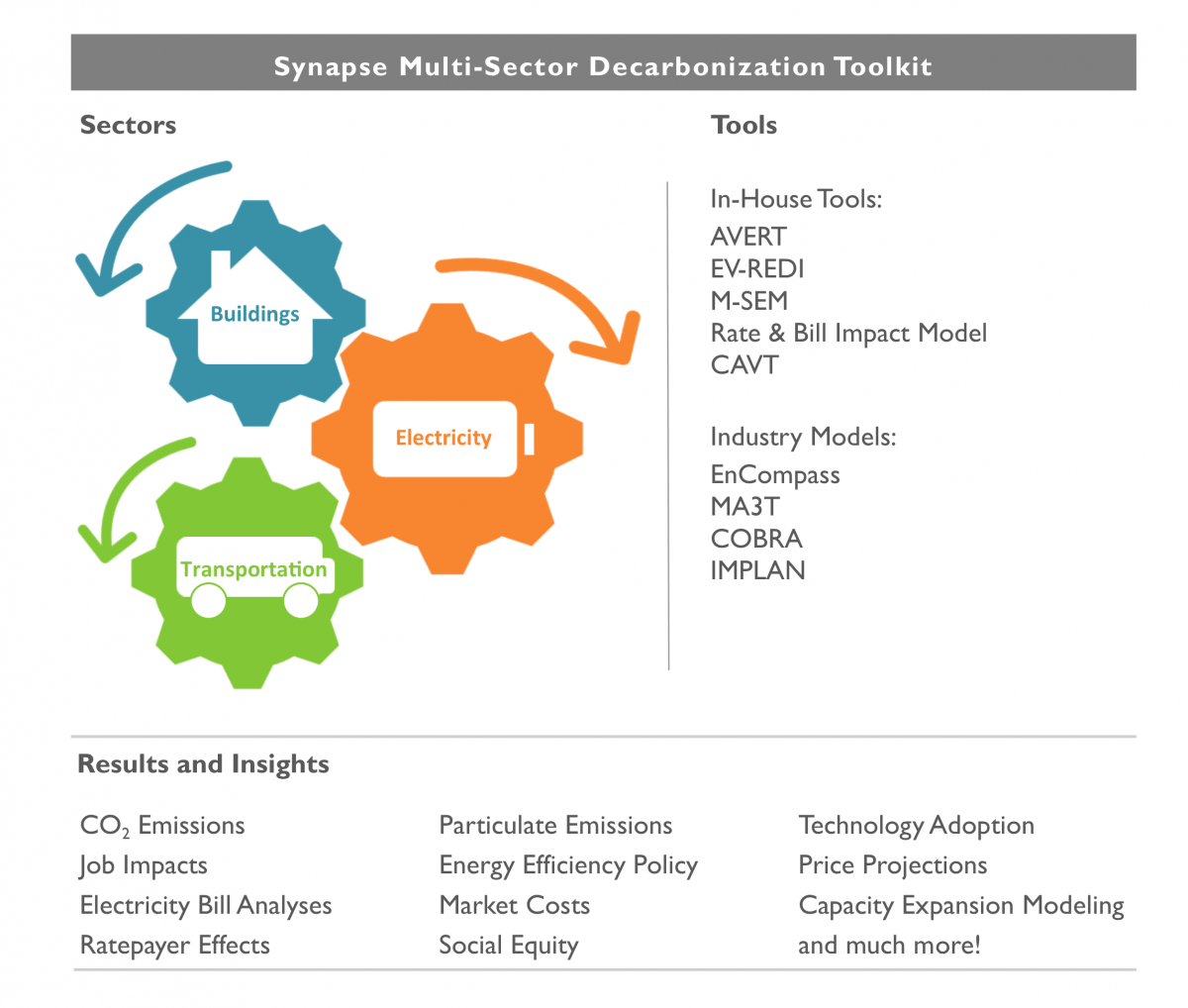Synapse Multi-Sector Decarbonization Toolkit

AVERT is an open-access tool built for the EPA by Synapse to estimate the hourly emissions and generation benefits of energy efficiency and renewable energy policies and programs.
EV-REDI uses detailed, state-specific data to calculate the impacts of various EV adoption trajectories. The calculated impacts include electricity demand, GHG and criteria pollutant emissions, and avoided fuel consumption.
M-SEM provides a comprehensive picture of future emissions across all energy sectors. It enables an economy-wide screening of a wide variety of emissions reduction options, such as coal retirements, electric heat pumps, and more.
Rate & Bill Impact Models are used to analyze rate and bill impacts. Our custom-built model takes into account changes in energy sales from a variety of initiatives, including energy efficiency and DSM programs and changes in EV levels.
CAVT analyzes the future economic viability of coal units by estimating the costs for individual coal units to comply with environmental regulations and comparing those costs to electricity market prices.
EnCompass by Anchor Power Solutions is a production-cost and capacity-expansion model of the electric sector. It uses inputs (e.g., demand, resource costs, and regulatory requirements) to estimate hourly impacts on the electricity system, including changes in generation, emissions, and capacity.
MA3T by Oak Ridge National Laboratory is a consumer adoption model that predicts the types of vehicles consumer will choose to purchase based on inputs including vehicle price, O&M costs, financial incentives, and the convenience of EV charging.
COBRA by the EPA is a health impacts screening and mapping tool. It uses county-level inputs on changes in criteria pollutants to estimate impacts on public health, including morbidity and monetized health effects.
IMPLAN by IMPLAN Group, LLC is an economic input-output model that assesses positive and negative GDP and job impacts (measured in jobs per year) associated with spending changes on various sectors.
BDC is an in-house tool for modeling the energy consumption of space and water heating systems in residential and commercial buildings across the country. For future years, the BDC develops heat pump technology adoption curves based on user inputs to calculate annual system sales by fuel type for each state, sector, and end use.